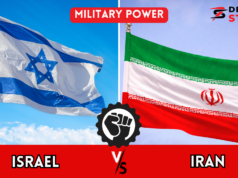F-35 Vs. Mirage 2000: In the dynamic world of military aviation, the pursuit of air superiority has always been at the forefront of technological advancements. Two iconic fighter jets, the F-35 Lightning II and the Mirage 2000, represent the culmination of decades of innovation and serve as cornerstones of their respective nation’s air forces. Each aircraft boasts unique features and capabilities, making them formidable assets in the skies. In this blog post, we will delve into the world of military aviation and pit these two titans against each other in a head-to-head comparison.

The F-35 Lightning II, often hailed as the “world’s most advanced fighter,” is the product of international collaboration, designed to meet the diverse needs of the United States and its allies. On the other hand, the Mirage 2000, a product of French aerospace ingenuity, has earned a reputation for agility and reliability. As we explore the characteristics, strengths, and weaknesses of these aircraft, we will gain insight into the evolving landscape of modern aerial combat and the challenges faced by pilots and military strategists.
In this blog we analyze the F-35 and Mirage 2000, shedding light on the critical role they play in shaping the future of military aviation.
F-35 Vs. Mirage 2000
Let’s delve into a detailed comparison of the F-35 Lightning II and the Mirage 2000 across various aspects:
Design and Development:
- F-35 Lightning II: The F-35 is a fifth-generation multi-role stealth fighter developed by Lockheed Martin. It is the result of a joint program involving the United States and several partner nations. The program includes three main variants: the F-35A (conventional takeoff and landing), F-35B (short takeoff and vertical landing), and F-35C (carrier-based).
- Mirage 2000: The Mirage 2000, designed and built by Dassault Aviation of France, is a fourth-generation multi-role fighter. It was developed as a successor to the Mirage III and has several variants, including the Mirage 2000C, 2000D, and 2000-5.
Stealth and Low Observability:
- F-35 Lightning II: The F-35 is renowned for its high level of stealth and low observability. Its design incorporates advanced radar-absorbing materials and shapes that reduce its radar cross-section, making it challenging for enemy radar systems to detect and track.
- Mirage 2000: The Mirage 2000 lacks the advanced stealth features of the F-35, which means it has a larger radar cross-section and is more detectable by modern radar systems.
Speed and Altitude:
- F-35 Lightning II: The F-35 has a top speed of approximately Mach 1.6 (1,200 mph) and can reach altitudes of over 50,000 feet.
- Mirage 2000: The Mirage 2000 is faster, with a top speed of Mach 2.2 (1,700 mph) and can reach altitudes of up to 59,000 feet.
Range:
- F-35 Lightning II: The F-35 has a range of approximately 1,200 nautical miles with internal fuel, making it suitable for medium-range missions.
- Mirage 2000: The Mirage 2000 has a longer range, with an approximate range of 1,550 nautical miles, allowing it to cover larger distances without refueling.
Weapons and Armament:
- F-35 Lightning II: The F-35 can carry a wide range of air-to-air and air-to-ground missiles and bombs, including the AIM-120 AMRAAM and the GBU-12 Paveway II.
- Mirage 2000: The Mirage 2000 is equipped with air-to-air and air-to-ground missiles and bombs, such as the Matra Super 530D and the SCALP cruise missile.
Avionics and Sensors:
- F-35 Lightning II: The F-35 features advanced avionics and sensor suites, including the AN/APG-81 AESA radar and the Distributed Aperture System (DAS) for 360-degree situational awareness.
- Mirage 2000: The Mirage 2000 is equipped with modern avionics but lacks the advanced sensor capabilities of the F-35.
Cost:
- F-35 Lightning II: The cost of an F-35 varies by variant and country, but it typically ranges from approximately $80 million to $108 million per unit.
- Mirage 2000: The cost of a Mirage 2000 varies by variant and country as well, with older variants being less expensive than modernized versions.
Combat Experience:
- F-35 Lightning II: The F-35 has seen combat in various theaters and has been used by several countries in combat operations, showcasing its versatility.
- Mirage 2000: The Mirage 2000 has a proven combat record, having been used by the French Air Force and other air forces in conflicts around the world.
Versatility:
- F-35 Lightning II: The F-35 is designed for a wide range of missions, including air-to-air combat, air-to-ground strike, electronic warfare, intelligence, surveillance, reconnaissance (ISR), and close air support. Its adaptability makes it suitable for various operational scenarios.
- Mirage 2000: The Mirage 2000 is also a multi-role fighter, capable of performing air-to-air and air-to-ground missions. However, its role may be more limited compared to the F-35 due to its fourth-generation design.
Cockpit and Human-Machine Interface:
- F-35 Lightning II: The F-35 features an advanced glass cockpit with a Helmet-Mounted Display System (HMDS), which provides the pilot with critical flight and targeting information directly on the helmet visor, enhancing situational awareness.
- Mirage 2000: The Mirage 2000 has a traditional cockpit layout with conventional instruments and displays. While effective, it lacks some of the advanced human-machine interface features found in the F-35.
Networking and Data Sharing:
- F-35 Lightning II: The F-35 is known for its network-centric warfare capabilities, allowing it to share real-time data with other friendly aircraft and ground forces. This capability enhances coordinated operations.
- Mirage 2000: The Mirage 2000 is capable of data sharing but may not have the same level of integration and data fusion capabilities as the F-35.
Maintenance and Logistics:
- F-35 Lightning II: The F-35 has a focus on ease of maintenance and reduced logistical footprint. Its design aims to minimize maintenance requirements and downtime, contributing to higher mission readiness.
- Mirage 2000: The Mirage 2000 is known for its reliability and ease of maintenance. It has a strong track record of operational availability.
Operational History:
- F-35 Lightning II: The F-35 has been used by multiple countries in various theaters, including combat missions in the Middle East. Its combat experience continues to grow.
- Mirage 2000: The Mirage 2000 has been employed by several air forces, most notably by the French Air Force, in conflicts such as the Gulf War and the Kosovo War.
Export and International Sales:
- F-35 Lightning II: The F-35 program involves multiple partner and customer nations, and it is one of the most widely exported fifth-generation fighters globally.
- Mirage 2000: While the Mirage 2000 has been exported to various countries, its export success is not as extensive as that of the F-35.
Upgradability:
- F-35 Lightning II: The F-35 program includes continuous updates and upgrades, ensuring that it remains at the forefront of technology throughout its service life.
- Mirage 2000: Modernized versions of the Mirage 2000, such as the Mirage 2000-5 and Mirage 2000-9, have received upgrades to extend their operational life and capabilities.
F-35 Vs. Mirage 2000 Data Table
Here’s a data table comparing key specifications and characteristics of the F-35 Lightning II and the Mirage 2000:
| Characteristic | F-35 Lightning II | Mirage 2000 |
|---|---|---|
| Manufacturer | Lockheed Martin | Dassault Aviation |
| Role | Multi-role fighter | Multi-role fighter |
| First Flight | December 15, 2006 | March 10, 1978 |
| Introduction | 2015 (US) | 1982 (France) |
| Max Speed | Mach 1.6 (1,200 mph) | Mach 2.2 (1,700 mph) |
| Range | Approximately 1,200 nautical miles (with internal fuel) | Approximately 1,550 nautical miles |
| Maximum Altitude | 50,000+ feet | 59,000 feet |
| Engine | Pratt & Whitney F135 (Variants available) | SNECMA M53 (Variants available) |
| Thrust (per engine) | Approximately 43,000 lbs of thrust (F135-PW-100) | Approximately 11,250 lbs of thrust (M53-P2) |
| Armament | Wide range of air-to-air and air-to-ground missiles and bombs | Air-to-air and air-to-ground missiles and bombs |
| Radar | AN/APG-81 AESA radar | RDI (Radar Doppler Impulse) radar |
| Stealth Capability | High stealth, low observable (LO) design | Limited stealth features |
| Cockpit | Advanced glass cockpit with Helmet-Mounted Display System (HMDS) | Traditional cockpit layout |
| Avionics | Advanced avionics and sensor suite, including Distributed Aperture System (DAS) | Modern avionics suite |
| Cost (per unit) | Approximately $80 million to $108 million (depending on variant) | $23 million, Varies by variant and country |
| Total Produced (estimated) | Over 600 (as of 2021) | Over 600 (various variants) |
| Operators | Multiple countries, including the U.S. and various NATO allies | France and several other countries |
| Notable Features | Vertical takeoff and landing (F-35B variant), stealth capabilities, data fusion, network-centric warfare capabilities | High agility, proven combat experience, reliable design |
Please note that specific performance and cost details may vary depending on the variant and country-specific configurations.
Conclusion
In conclusion, the comparison between the F-35 Lightning II and the Mirage 2000 reveals two distinct generations of fighter aircraft, each with its own set of strengths and weaknesses. The choice between these two aircraft ultimately depends on the specific requirements, priorities, and operational scenarios of the user’s air force.
The F-35 Lightning II excels in stealth, network-centric warfare capabilities, and adaptability to a wide range of mission profiles. It represents the cutting edge of modern air combat technology, making it a preferred choice for air forces seeking advanced multi-role capabilities and high situational awareness.
On the other hand, the Mirage 2000, while a 4th-generation fighter, remains a formidable and cost-effective option. Its high speed, agility, and proven combat record make it a valuable asset, especially in scenarios where advanced stealth may not be the primary requirement.
Ultimately, the choice between these two aircraft hinges on the specific operational needs, budget constraints, and strategic goals of the nation deploying them. Some air forces may opt for the advanced capabilities and stealth of the F-35, while others may prioritize the Mirage 2000’s proven performance and cost-efficiency. Both aircraft have their place in the ever-evolving landscape of military aviation, contributing to the defense and security of their respective nations.






